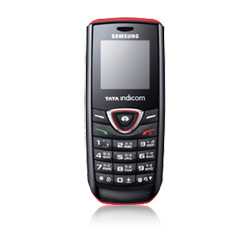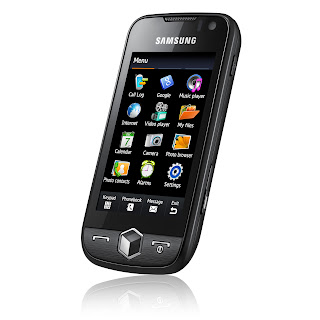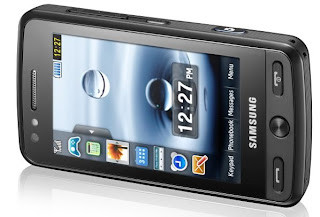SAMSUNG TABLAT
Samsung Galaxy Tab 2 7.0 Review: A Low-Cost, Full-Featured Android Tablet
On the surface, the Samsung Galaxy Tab 2 7.0 appears to be little more than a low-key refresh of its six-month-old predecessor, the in-betweener Galaxy Tab 7.0 Plus. Admittedly, it is a fairly subtle refresh. But the Tab 2’s noticeably lower cost--at $250 (as of April 23, 2012), it represents a 38 percent drop in price from the 7.0 Plus--coupled with its numerous features gives it a clear advantage over the leading value-tablet.
With that sizable drop, the 7-inch Galaxy Tab 2 marks the first time a premium Android tablet maker like Samsung has gone full-bore after the value market. The Galaxy Tab 2 is competitively priced against the $200 Kindle Fire and Nook Tablet, 7-inch tablets that each use their own customized versions of Android 2.3. Those Android variants can provide better integration for some tasks, such as reading books and magazines, or acquiring media, but that convenience comes at the cost of wider compatibility with the Android app universe: Both
The Galaxy Tab 2, in contrast, runs Android 4.0. That means it can handle standard Android phone and tablet apps in the Google Play store. It also offers features that neither the Kindle Fire nor the Nook Tablet does, such as an infrared port and a rear-facing camera. Samsung sacrificed built-in storage capacity (just 8GB, same as the other two value tablets and half of the 16GB provided on the Tab 7.0 Plus) to achieve the Tab 2's low price, but that doesn’t detract from the Tab 2’s widespread appeal.
Galaxy Tab 2: Design and Performance
The Galaxy Tab 2 7.0 is an evolutionary step over the extremely similar Galaxy Tab 7.0 Plus. Both models weigh 0.76 pound, and they feature a similar design and build quality, plus similar dimensions. Both measure 4.8 by 7.6 inches, but the Tab 2 is slightly thicker at 0.41 inch, versus the 7.0 Plus's 0.39 inch. The balance and weight are such that this tablet isn’t onerous to hold one-handed, though I’d like to see the weight become lighter still.

Only subtle tweaks distinguish the two. For example, the Tab 2’s plastic bezel curves around to the front of the screen, giving the front face of the tablet a pleasing look. The Tab 2 also has a larger infrared port, located at the top edge of the tablet when you're holding the slate in landscape mode; the port now wraps around the back of the device, presumably to improve communications between the tablet and your entertainment components. The power button and volume rocker, positioned along that same edge, have a more rounded, easier-to-press shape. The MicroSD Card slot door is slightly (by millimeters) wider, too, and just a bit easier to open, but you'll still need to do so using a fingernail. You can add up to 32GB of storage via MicroSD, a big benefit over the Kindle Fire, which lacks any expansion slot for local storage.
The back of the Tab 2’s case is a light, “titanium”-hued plastic, as opposed to the darker brushed gray of the earlier model. And although the rear camera is the same at 3 megapixels, the Tab 2 lacks the flash found on the 7.0 Plus.

The flash is just one thing that the Tab 2 sacrificed to achieve its low price. Inside, the Tab 2 has a 1GHz dual-core processor, down from the Galaxy Tab 7.0 Plus’s 1.2GHz dual-core processor. The processor change might account for why, in PCWorld Labs tests, the Tab 2 took 14 seconds longer to boot up than the Tab 7.0 Plus did; it also turned in a noticeably slower frame rate on the two GL Benchmark tests we run.
Other sacrifices: As noted earlier, the Tab 2 has just 8GB of built-in storage, down from the 16GB found on the Tab 7.0 Plus, and on a par with the Kindle Fire and Nook Tablet. The front-facing camera drops from 2 megapixels on the Galaxy Tab 7.0 Plus to a mere 640 by 480 resolution on the Tab 2--a significant, real-world quality drop that resulted in pixelated conversations when I used the camera for video chat.

Samsung's Plane to Line Switching (PLS) display is 1024 by 600 pixels, the same as on the Galaxy Tab 7.0 Plus before it. These days, this display is merely average, as several 7-inch tablets with 1200-by-800-pixel resolution are now available. I noticed that colors were slightly off on the Tab 2 compared with how they appeared on the older 7.0 Plus model; detail in images I viewed in the native Google Gallery app seemed slightly worse, too, although the tablets still scored closely on our subjective tests of the displays. I'm currently investigating this issue. Some of the differences may be attributable to the display itself, or they may have some foundation in how Google has changed Android's image handling between Android 3.2 (which shipped on the Tab 7.0 Plus) and Android 4.0.3 (which ships on the Galaxy Tab 2).
Another interesting difference between the two tablets: The Tab 2 has better audio output. Music sounded fuller, and not in an overprocessed way. The Tab 2 does have an equalizer option, which the 7.0 Plus lacked, but we didn't turn any of the effects on.
As a bonus over its Kindle Fire and Nook Tablet competition, the Galaxy Tab 2 adds Bluetooth and GPS, too. Overall, the Tab 2 is ahead of the Kindle Fire and Nook Tablet when it comes to features
Galaxy Tab 2: Software
The Galaxy Tab 2 series is Samsung’s first to ship with Android 4.0 Ice Cream Sandwich. On top of that, Samsung includes its own TouchWiz UX overlay, with convenient pop-up launcher tweaks for fast access to a sliding bar of widgetlike Samsung apps (such as a calculator, an email app, and a world clock). TouchWiz also provides an easy-to-use screen-capture utility and superhandy customizations to the settings pop-up, along with some Samsung-specific software such as AllShare for DLNA network media sharing, and Samsung’s own app stores for games, media, books, and music.
In addition to the Samsung-branded apps, the Galaxy Tab 2 comes with a handful of useful Android apps preinstalled. Among them are Dropbox (with a year of 50GB Dropbox service included), the Peel Smart Remote app for use with the infrared port, and Polaris Office. The Peel app is a mixed bag, though: While it allows you to discover content visually, configuring the settings can be frustrating, and browsability could be improved. Ultimately, Samsung would do far better to write its own, more basic remote-control app, as Sony has done on its Tablet S.

If you own a Samsung Wi-Fi camera or HDTV, you may be able to benefit from some additional capabilities of the Tab 2 that tie in to Samsung’s product stable. Remote Viewfinder, which works with Samsung's Wi-Fi cameras, could have some interesting applications for group photos, for example; with this capability, you can use Wi-Fi Direct to form a connection between the tablet and the camera, and together with an app on the tablet, you can then use the tablet to control the viewfinder, shutter, zoom, and flash of the camera. Meanwhile, Smart View lets you mirror content from your TV on the tablet, but this function works only with Samsung 7000 series LED HDTVs, circa 2011 and later.

 Samsung Hero E3123 is a new creation from the company which has already been launched in the Indian mobile market. There are lots of mobile models that are present in the Indian mobile market. This particular model is also expecting to get good response from the Indian customers. The Samsung Hero E3123 price in India is Rs. 3400. This mobile is specially designed for the middle class people who want all features in a very affordable price. The Samsung Hero E3123 features and specification are mind blowing. A looks and design of the handset is very beautiful. The mobile phone is having 80.06gm weight. A dimension of this model is 112.8 x 46.4 x 13.2mm. The handset is supported 3D sound technology. Audio and video players are enabled in this cell phone. The Samsung Hero E3123 is providing up to 8GB external and 36MB internal memory with SD memory card. Lots of games and wall paper is also available in the mobile phone. Dual VGA camera is well integrated in the handset. Video capturing facility is also added in the cell phone with video streaming. Audio jack of this model is 3.5mm with FM radio. Operating system of the Samsung Hero E3123 is Samsung proprietry. An excellent battery is also enabled in the handset with up to 330 to 550 hours standby and up to 200 min to 500 min talk time facility. The mobile phone is supported 3G, GPRS and EDGE connectivity options. The cell phone is integrated WAP and HTML browser. The model is having SMS, MMS and email communication service. Instant messaging is also presented in the Samsung Hero E3123. The mobile phone is having social networking service. The handset is included 2inches TFT display screen. A resolution of the display size is 128 x 160 pixels. Samsung Hero E3123 pictures are present on the internet and they can be grabbed from the internet. Samsung Galaxy Pop and Samsung Galaxy Tab are two models from the company which are launched in the market and are getting warm response from the Indian market. The company is expecting a lot from the Samsung Hero E3123 model that is already launched in the Indian mobile market. res : Keep yourself informed on Samsung Hero E3123 and know about your Samsung Guru Dual 35 At Mobile dekho.com.
Samsung Hero E3123 is a new creation from the company which has already been launched in the Indian mobile market. There are lots of mobile models that are present in the Indian mobile market. This particular model is also expecting to get good response from the Indian customers. The Samsung Hero E3123 price in India is Rs. 3400. This mobile is specially designed for the middle class people who want all features in a very affordable price. The Samsung Hero E3123 features and specification are mind blowing. A looks and design of the handset is very beautiful. The mobile phone is having 80.06gm weight. A dimension of this model is 112.8 x 46.4 x 13.2mm. The handset is supported 3D sound technology. Audio and video players are enabled in this cell phone. The Samsung Hero E3123 is providing up to 8GB external and 36MB internal memory with SD memory card. Lots of games and wall paper is also available in the mobile phone. Dual VGA camera is well integrated in the handset. Video capturing facility is also added in the cell phone with video streaming. Audio jack of this model is 3.5mm with FM radio. Operating system of the Samsung Hero E3123 is Samsung proprietry. An excellent battery is also enabled in the handset with up to 330 to 550 hours standby and up to 200 min to 500 min talk time facility. The mobile phone is supported 3G, GPRS and EDGE connectivity options. The cell phone is integrated WAP and HTML browser. The model is having SMS, MMS and email communication service. Instant messaging is also presented in the Samsung Hero E3123. The mobile phone is having social networking service. The handset is included 2inches TFT display screen. A resolution of the display size is 128 x 160 pixels. Samsung Hero E3123 pictures are present on the internet and they can be grabbed from the internet. Samsung Galaxy Pop and Samsung Galaxy Tab are two models from the company which are launched in the market and are getting warm response from the Indian market. The company is expecting a lot from the Samsung Hero E3123 model that is already launched in the Indian mobile market. res : Keep yourself informed on Samsung Hero E3123 and know about your Samsung Guru Dual 35 At Mobile dekho.com. 


































































